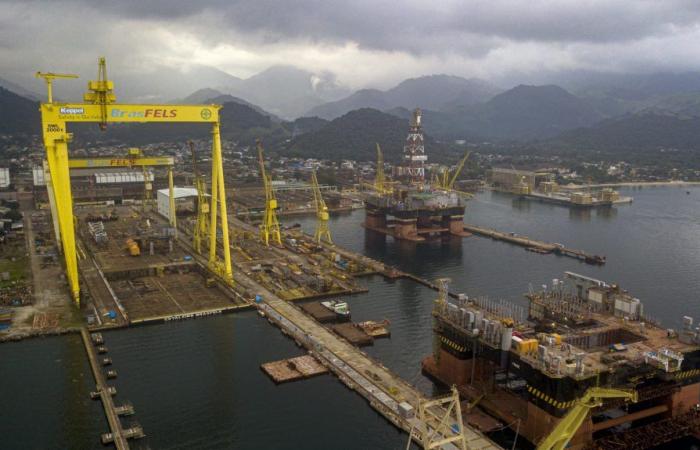Bloomberg — Brazil’s rebound from a stunning slump in oil production promises to complicate OPEC’s efforts to micromanage global supplies and prices.
Also read: Race for new oil reserves in Latin America leads to record investment
Daily crude oil production in the South American power It started the year with 3.73 million barrels, and then plummeted almost 25% as workers crawled across the giant offshore platforms to make repairs and replace worn-out equipment.
More than a third of the deficit has now been recovered, offering far-reaching implications for Latin America’s largest economy and global energy markets. All that extra oil will hamper the Organization of the Petroleum Exporting Countries’ efforts to boost prices by cutting production.
Brazil is the wild card of the oil market after a drop of almost a million barrelsBrazilian oil production plummets from daily record in January.
Brazil’s prodigious offshore oil fields, like American shale, are an eternal nuisance for OPEC and its hegemony over the world’s crude oil balances. The recent surprise decision by the cartel and its allies to relax some controls on oil exports could backfire if the Brazilian rebound is too robust.
Petróleo Brasileiro SA (PETR4) is advancing the date of commissioning of a 100,000 barrels per day production vessel in the fourth quarter of 2024as reported on June 19 by the state-controlled explorer.
Under President Luiz Inácio Lula da Silva, Brazil has pushed for closer ties with OPEC and its allies, while refraining from any commitment to limit production through its quota system. Last year, Brazil announced that it was joining a cooperation letter with the OPEC+ alliance which provides a platform for dialogue between producing countries.
You may be interested: OPEC+ is unlikely to increase oil production, according to Energy Aspects
In fact, Brazilian fields could exceed the pre-collapse figure by about 200,000 barrels per day this yearas maintenance work is completed and two new offshore operations begin operations, according to Wood Mackenzie Ltd.
“More wells will come online and start producing,” Wood Mackenzie wrote in an email. “We think it is too early to say that production will be disappointing.”
Welligence Inc., for its part, is more cautious and forecasts a daily production of 3.4 to 3.5 million for the remainder of the year. Brazilian production growth will not resume the dizzying pace of 2023 until the second half of 2025, with the arrival of four new offshore facilities, according to Andre Fagundes, who covers Brazil for the energy consultancy and previously worked for ANP.
Petrobras and other oil drillers face multiple headwinds. The environmental agency known as Ibama is on strike and it seems that the confrontation over wages will only get worse. This has delayed permits for new production equipment and related work. The strike has already stopped 80,000 barrels of daily productionaccording to the Brazilian Petroleum Institute.
And then there’s Tupi, Brazil’s crown jewel, where crude oil production peaked several years ago and continues to decline. Petrobras needs to negotiate with the ANP to extend the exploitation license before it can commit to investing billions in a secondary recovery program to stop the decline.
During a conference call with analysts in May, Petrobras attributed the production setbacks to so-called planned maintenance, and said it expects to gradually return to the old. The company did not respond to a request for comment for this story.
–With the collaboration of Mariana Durao and Beatriz Amat.
Read more at Bloomberg.com






